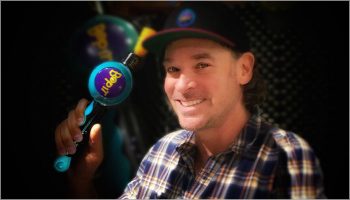John Bell – Director of Product Design and Development at Buffalo Games – on magic words and secret sauce
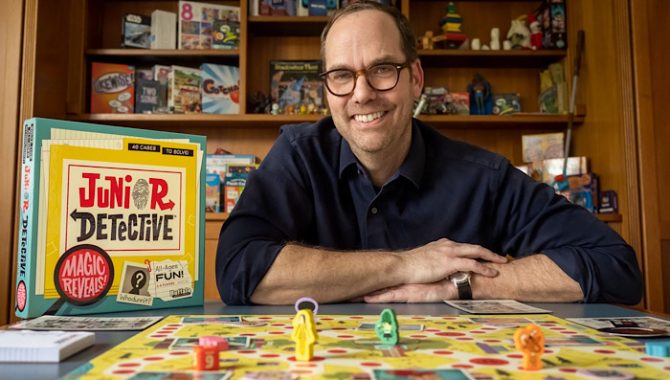
John, we caught up on Brands Untapped last year; I found out about licensing and Tetris in particular. Another of your titles caught my eye, though… Junior Detective.
Ah, yes, Junior Detective… There’s no shortage of ideas, but that’s probably the tip of the spear of our newest games.
The tip of the spear! I like that! Tell us about Junior Detective, then: what was your goal?
For Junior Detective, we wanted to bring good-old-fashioned mystery solving to the family. We’re already seeing how popular some of those types of things are – where it’s like cold cases, or popular procedural dramas like CSI – and not just in what people are streaming, or watching or reading, but also in board games for adults. So, we saw an opportunity as there’s really nothing like that for families or kids. We wanted to say, “Well, what is CSI for kids? What’s something new?”
So, it lets families play detective?
Elementary, Dr. Watson! When playing, people really do feel like detectives. They use decoders, take notes, try to determine if someone is not telling the truth, and ultimately solve cases… multiple cases, potentially! Only we put it in a child’s world; in their neighbourhood, if you will.
What kind of challenges did you face designing a family game with that theme?
Well, for this one, we dove in and developed a lot of the content – 40 unique cases – so the play value was right-sized. The key was making it engaging from a child’s point of view, while having fun echoing the spirit and flavour of some the classic children’s literary detectives that we all grew up with. For example, what’s happening in the neighborhood? What are mysteries to crack for this age? Is it something at the ice cream shop, at the coffee shop, at the school? Who’s behind it? Who done it? In the end, our cases range from The Chameleon Caper, The Tick Tock Mix Up, and the Soapy Tsunami!

Got it…
Then there are different witnesses… You have to go and interview them, and the types of clues they give you get you going. You start deducing! Everyone has the list of suspects that you’re trying to whittle down as you go. Of course, not all characters are telling you the truth. It takes a bit of gumshoe work to figure it out. So, it’s also a race to figure it all out: can you crack the case? And will you be first?
This sounds fantastic! More specifically, though, what are some of the things involved? How do you find clues?
The first thing you see – immediately after you open the box – is each case presented to you. There are 40 unique cases. Each one is in its own little folder that you open… You read the story starter… And it tells you how to kick off! It gives you an idea of – well, let’s just say there’s some clues buried in the case…
Right. So, you start asking questions…
Right. Whom do I talk to first? Where do I go? That sort of thing. In doing that, every clue you get has a cool reveal. It might be the red filter that you move over the top to reveal what’s hidden underneath the secret lens. It might be that some of the words are written backwards and upside down… In which case you need a mirror to decode it and see what it says. Some of the clues even use a cipher… You have to hold them in a certain way just to reveal bits of printed information.
Terrific! So, there’s a real escape-room feel to the puzzles?
Exactly. One technique just uses the heat from the palm of your hand. When you gently rub the clue card, some of the letters and words disappear. That leaves certain words behind spelling out the clue you’re looking for. There’s a couple of different things that are really fun to put in this space, especially for a seven-, eight-, nine-year-old and up, through to parents, to make it exciting and fun as you go as you collect clues around the town. It’s been a lot of fun; it’s just been great.
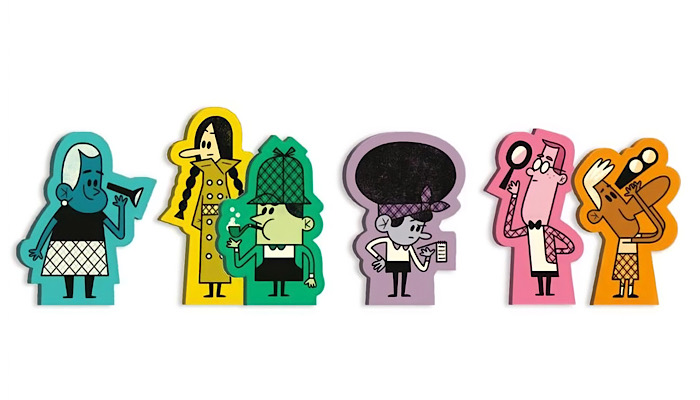
It feels to me as though this is a really fun way to get kids thinking laterally… Not always an easy balance to get right.
Yes, exactly. I think that’s important actually… One of the design principles revolves around giving kids the power of choice. The more we can empower a player – even at a young age – to make a choice about whatever strategy they want to implement, and how are they’re playing, the better. It’s such a powerful tool. In Junior Detectives, those options are engaging, and the number of choices is clear.
And presumably that clarity helps keep the game accessible to a younger audience?
Right. I think having multiple choices so kids feel like they can control their own game is wonderful. Those choices are going to determine how much you succeed, or how much you’re behind… And then you can catch up sometimes as well. Sometimes you even see players switching strategy midway. It’s something I see at home with our kids, and it’s so exciting to see them piecing their plan together and then adjusting as the game progresses. That’s the stuff!
Thinking through a strategy you mean?
Yes – just see the process work as they’re thinking through, “Do I do this? Do I do that?” I think that the gives each player ownership over the game. For me personally, a good game is one in which I immediately know what I want to do to be better in the next game. So here, players can easily realise, “I should’ve done this; I could’ve done that… I’m going to try this next time.” That’s a great sign of just how invested people are as they’re moving through the play.
And on this subject, you’re on record as saying your ethos boils down to three magic words: “Let’s play again!” What makes a game like that? What’s the magic ingredient that goes into “let’s play again!”?
A lot of it has to do with setting the stage. You have to give players a choice about the best way to succeed in the game. To me, the game itself should be enjoyable enough, whether it’s a solo player game or something else, that you want to play again because you want to do better. Whether you find those moments funny or tense, you want to try it again. “I know what I want to do…” The game should have its hooks in you. That’s a big part of the recipe. Sometimes it’s got to have more meat on the bone in terms of the play in the end. Whether it’s a 15-minute game or a three-hour game… It’s a testament to saying, “I’m in it, let’s do this.”
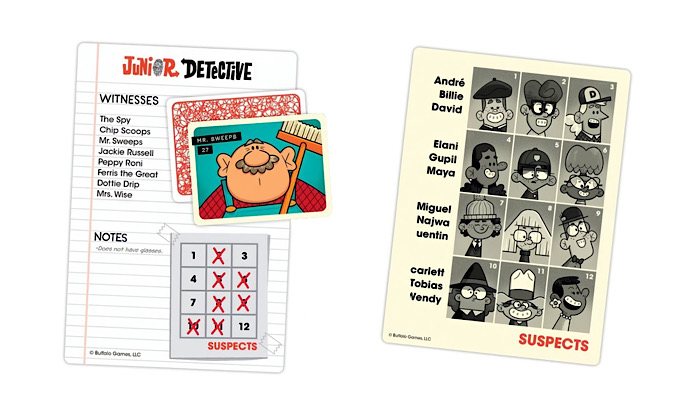
And dare I ask: How common is that? How many games do you look at a year where you just know it’s just not going to work?
We easily review over 1,000 concepts a year. Sometimes we find it, sometimes we don’t. But sometimes we’ll also see where there’s possibility. That’s the fun part and our secret sauce. Just leaning into it, and even working with the designers or inventors of seeing, “What if? What if it was this?” or “Here, let’s take a step back; let’s look at the beats of this.” It’s also important to keep in mind – because of the nature of games – it’s got to communicate. It’s storytelling.
In what way?
Making sure that the promise and key elements are evident on the package or any communication. When people are scrolling online, or scanning games in aisle, you don’t necessarily have the luxury of having word-of-mouth. You want to communicate what’s magical about a product… What’s cool about this? Just enough to have people say, “Oh, that looks cool. I want to try that.” Sometimes people don’t even know WHAT looks cool, but they want to play.
Because often – in reality – you have to judge a book by its cover…
Yes, exactly. Exactly. Exactly.
Okay. We need start wrapping this up, John, but… Well, let me ask you this: what’s the one piece of advice you most find yourself giving to inventors?
It’s not so much advice I give to the inventors, but I would say the one thing I think is so important is to have fun. You’re making play, right? What a privilege! And how fortunate are we to do this for a living? If you’re not passionate about it, if you’re not having fun doing it, it’s going to come through. The end player is going to feel it.
If you’re not having fun, your players won’t?
Right. There’s always going to be deadlines; there’s always going to be pressure – sure… It’s always going back to remembering what that original spark was. What got you so excited about this in the first place that it blew your hair back?
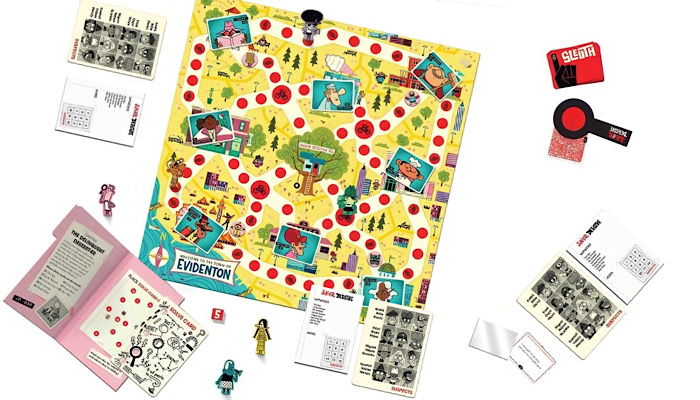
Blew it away completely in my case…
Ha! I realised that as I said it! But when you’re in those trenches, or when you’re trying to get all these final production files out, it’s the 11th hour, sometimes you just have to remind yourself like, “Oh yes, this is why we’re doing it.” It’s those moments; it’s that finish – once it all comes together, you can bring it home and play. Those are the things I remind myself about, and we share on the team: why, why, why?
Great answer. You’re not just getting a new SKU out to meet a quotient…
No. And as far as design is concerned , it’s also, I think about pushing yourself. Pushing and stretching your thinking. Don’t be afraid to just go for it! Be weird, be bold. One last thing…
Go on…
One of the great things about the game community is that it’s a small industry. A lot of people know each other, and it’s also a collaborative community. Sure, it’s competitive from company to company, but the people within it are just wonderful and there’s a lot of people rooting for you – even though you’re at different places and rooting for the idea. We all get excited for something else that’s coming up from somewhere else. So, people are happy to recommend other publishers, you know? Publishers will say, “Maybe this isn’t for us, but you should go talk to so-and-so.”
Right! Not always, of course, but often!
I see so much of that, which is just great. It’s just – I can’t speak for every other industry, but that’s something that seems unique to what we do as well. It’s just a very nurturing environment to offset all this… Is every game going to get listed? No. Is every game going to get picked up by someone? No. In some ways, it’s a casting process, but for different reasons, but it is a great community. I haven’t experienced anything else like it, which is wonderful.

Brilliant. What’s next for you, John?
Lunch.
Ha!
We’ve got some special things launching this year… I think people will be surprised at how we’re stretching our wings a bit here at Buffalo Games. One of them is Pop It Pro. That, I think, is going to catch people by surprise. It’s a super addictive, electronic game of Pop It popping like you’ve never seen before! Beyond that, we’ve got a few more things bubbling in the laboratory! Some of it’s really breaking new ground; it’s like smashing a champagne bottle on the side of a ship and saying, “Alright, let’s go explore. Let’s try some new ideas as well.”
Brilliant. Final question, then… What’s the most interesting thing in your office or on your desk?
Well, I’m picturing my desk at home… It’s a mess, but I’ve got everything from Star Wars – which I’ve had since I was a kid. My old Snow Speeder, maybe… You know, my daughter’s got her own little rock collection she started for me that I keep that there quite a bit. And, one thing I keep nearby – because it centres me in a way – is a note my oldest daughter wrote. When they’re not in school, the kids like to sit with me; they have their little desk next to mine. They like to come in and design games and puzzle images and stuff while I’m working.
Right…
Anyway, one day she was working on some different game ideas, and she’d written a little Post -it note, put it up on the wall in front of her. I have notebooks and Post-its everywhere. It’s kind of how I work, but I was just watching what she was doing… Then when she got up, I leaned over to see what she’d written. It was three simple rules about how to make a game. Like… How to play the game. How to move. How to win.
Concise!
She just boiled it down in such a way that I was like, there it is, at that age, she’s got it.
Brilliant. Thank you so much for making time for us again, John.
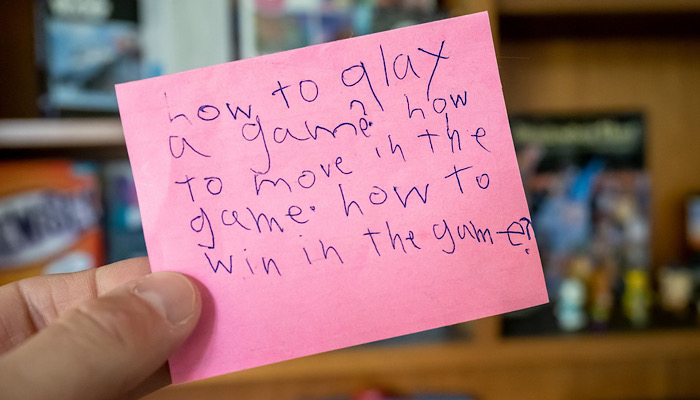
–
To stay in the loop with the latest news, interviews and features from the world of toy and game design, sign up to our weekly newsletter here














